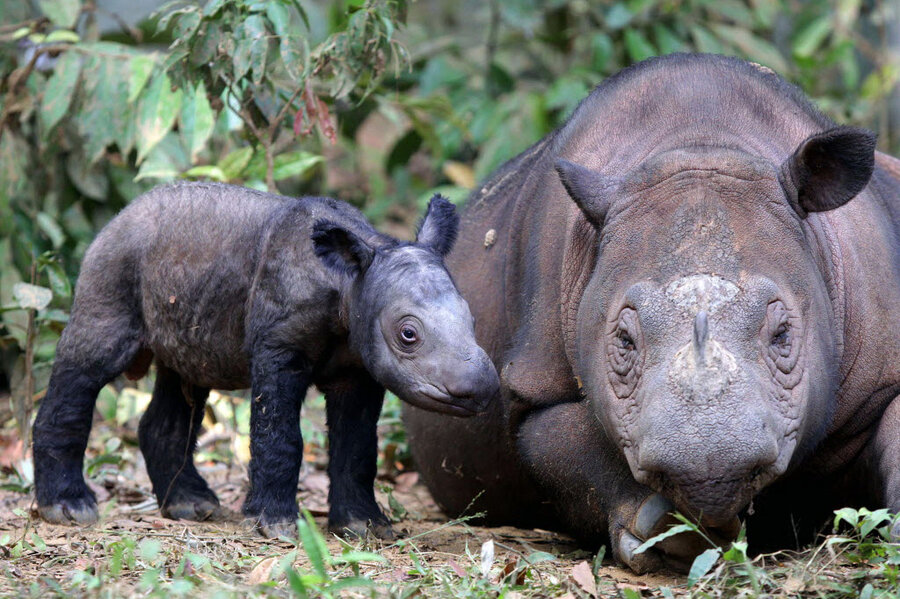Sumatra has some big news to celebrate this World Rhino Day
Loading...
The Sumatran Rhino Sanctuary in Indonesia had great news to celebrate World Rhino Day on Tuesday: Ratu, one of only 109 Sumatran rhinos in the world, is carrying a baby who just might help save the species.
Ratu, a wild rhino who meandered into the Rhino Sanctuary at the Way Kambas National Park on the Indonesian island of Sumatra ten years ago and has lived there ever since, is predicted to deliver in May, according to Agence France-Presse. At 16 months, rhinos have one of the longest gestation periods in the world: among land mammals, they’re second only to elephants, whose pregnancies last nearly two years.
The baby’s father, Andalas, is a Cincinnati native, brought to help Indonesia’s breeding program in 2007. His younger brother, Harapan, is now the only Sumatran rhino in the United States, but not for long. By early October, he’ll have joined his brother and five other "Ice Age wooly rhinos," in Sumatra.
Their sister Suci's death in March worsened conservationists’ fears about the future of the species, the smallest of the world’s five remaining types of rhino: Indonesia is home to the last 100 in the wild, after they disappeared from Malaysia this year. Their habitat is threatened by deforestation, like so many other creatures, but rhinos hold a particular appeal for illegal poachers, since their horns are used in some cultures’ traditional medicines – and Sumatran rhinos have not one, but two.
“Suci was a symbol of hope for her entire species, one that is quickly losing ground in the wild, and her absence will leave a hole in our hearts,” said Terri Roth, director of the Cincinnati Zoo’s Lindner Center for Conservation & Research of Endangered Wildlife, in a statement after the rhino’s death. “If we don’t act quickly and boldly, the loss of this magnificent animal will be among the great tragedies of our time.”
There’s considerable pressure, then, on Ratu and Andalas to raise a calf who can fill that “hole in our hearts.” Siti Urbana Bakar, Indonesia's minister of environment and forestry, said the pregnancy “represents nearly two decades of international collaboration to save the species."
Although only four Sumatran rhinos have ever been born in breeding facilities, it’s not the first time for Ratu and Andalas: the pair already have a baby, Andatu, whose 2012 birth was the first in an Asian breeding center in nearly 150 years, according to AFP.
But rhinos could use help from high places. Researcher Christy Williams suggested that intervention from Indonesian President Joko Widodo might help achieve a back-from-the-brink miracle like former Indian prime minister Indira Gandhi’s efforts to save tigers from extinction.
Sumatran rhinos’ story also illustrates the importance of international cooperation, even if just for the sake of one more calf. “One more rhino means one percent more animals. That is not a lot but it is certainly an upward trend," Susie Ellis, director of the International Rhino Foundation, told AFP.






